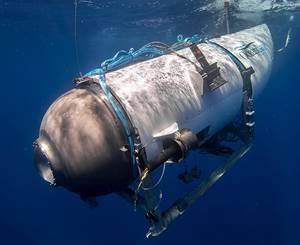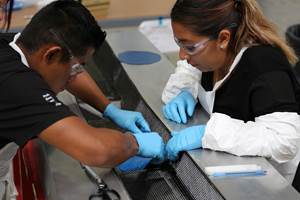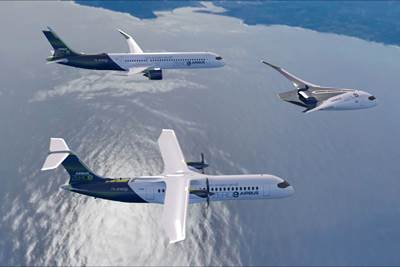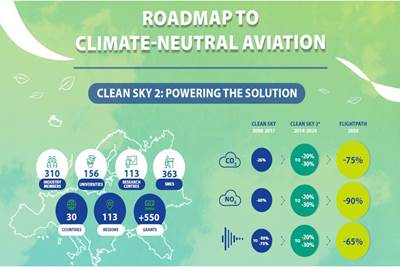Universal Hydrogen Series A funding to build and test full-scale hardware for hydrogen commercial aircraft
$23.5 million in funding to set Universal Hydrogen on a path to have carbon-free airplanes using composite tanks in commercial service by 2025.
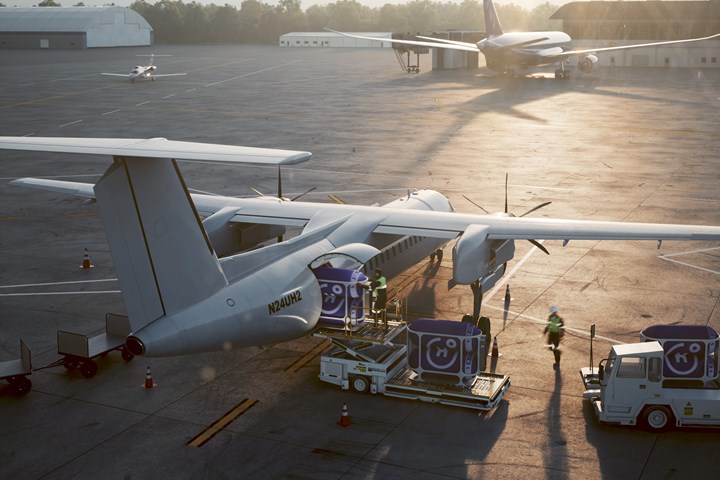
The company plans to convert the Dash 8 twin-turboprop regional aircraft (above) to hydrogen fuel-cell propulsion, which incorporates a twin-capsule module made with continuous carbon braided preform over a low permeability membrane. Photo Credit: Universal Hydrogen
On April 22 Universal Hydrogen ((Los Angeles, Calif., U.S.) announced its $20.5 million Series A financing round led by Silicon Valley venture fund, Playground Global, with the investor syndicate comprising Fortescue Future Industries, Coatue, Global Founders Capital, Plug Power, Airbus Ventures, JetBlue Technology Ventures, Toyota AI Ventures, Sojitz Corp. and Future Shape. Founded in 2020 by aviation industry veterans Paul Eremenko, John-Paul Clarke, Jason Chua and Jon Gordon, Universal Hydrogen stitches together the end-to-end hydrogen value chain for aviation, both for hydrogen fuel and hydrogen-powered airplanes.
This recent financing — which brings Universal’s total funding to $23.5 million — reportedly enables Universal Hydrogen to accelerate the development of its hydrogen logistics network and regional aircraft conversion kits, and bolsters the company’s burgeoning commercial activities (see “Universal Hydrogen uses dry braided carbon preform tanks as part of plan to decarbonize aviation”). Universal Hydrogen is building a fuel distribution network that connects hydrogen production directly to the airplane using modular capsules that are transported using the existing freight network, avoiding the need for costly new pipelines, storage facilities and fuel trucks. The company is also developing conversion kits to retrofit existing 40-60 passenger regional airplanes with a hydrogen fuel cell powertrain. First commercial flights are planned no later than 2025, with operating costs equivalent to those of conventional hydrocarbon-burning airplanes and decreasing rapidly thereafter.
“We see the near-term decarbonization of regional aviation as a first step and catalyst, setting the whole industry on a path to meeting Paris Agreement emissions targets,” says Paul Eremenko, Universal Hydrogen co-founder and CEO. “Hydrogen today is the only viable fuel for getting to true zero emissions in commercial aviation, and our goal is to de-risk the decision for Airbus, Boeing and COMAC to make their next new airplane in the 2030s a hydrogen-powered one.” To that end, Universal Hydrogen says it will make hydrogen economically and universally available at airports worldwide, work with regulators to develop appropriate certification and safety standards and demonstrate passenger enthusiasm for carbon-free, hydrogen-powered flight.
Since Universal Hydrogen’s initial fundraise and partnering with Plug Power (Latham, N.Y., U.S.) and magniX (Redmond, Wash., U.S.), the team successfully demonstrated a subscale fuel cell powertrain and hydrogen capsules. The company also secured interest from multiple airlines to serve as early customers. The current financing round will enable Universal Hydrogen to significantly grow its engineering team, complete a 2-megawatt (MW) fuel cell powertrain and fully test both liquid and gaseous hydrogen capsules. The company is taking additional airline orders for its first several years of commercial deliveries, and is also consolidating its operating footprint at Jack Northrop Field in Hawthorne, Calif.
“What attracted us to Universal Hydrogen was the team’s bold vision, depth of experience and scalable ecosystem approach,” says Peter Barrett, founder and general partner at Playground Global. “Rather than building a point solution for just one corner of the market, the team looked at the whole hydrogen value chain, identified the key gaps and developed pragmatic solutions to close them.”
Fortescue Metals Group (Fortescue) Founder and Chairman Dr. Andrew Forrest AO says Fortescue is committed to leading the global transition to a zero-carbon future by establishing global demand and supply of bulk green hydrogen. “At Fortescue Future Industries we are delighted to make this investment and support Universal Hydrogen in setting aviation on the path toward zero emissions,” says Dr. Forrest. “Aviation is an essential part of this transformation and Universal Hydrogen has emerged as the clear leader in this space. We look forward to continuing to develop our relationship as we move toward a green energy future.”
Related Content
The lessons behind OceanGate
Carbon fiber composites faced much criticism in the wake of the OceanGate submersible accident. CW’s publisher Jeff Sloan explains that it’s not that simple.
Read MoreDrag-based wind turbine design for higher energy capture
Claiming significantly higher power generation capacity than traditional blades, Xenecore aims to scale up its current monocoque, fan-shaped wind blades, made via compression molded carbon fiber/epoxy with I-beam ribs and microsphere structural foam.
Read MoreComposites manufacturing for general aviation aircraft
General aviation, certified and experimental, has increasingly embraced composites over the decades, a path further driven by leveraged innovation in materials and processes and the evolving AAM market.
Read MoreCarbon fiber, bionic design achieve peak performance in race-ready production vehicle
Porsche worked with Action Composites to design and manufacture an innovative carbon fiber safety cage option to lightweight one of its series race vehicles, built in a one-shot compression molding process.
Read MoreRead Next
Airbus reveals new zero-emission concept aircraft
The three concepts — all codenamed ZEROe — each represent a different approach to achieving zero-emission flight. The aircraft could enter service by 2035.
Read MoreClean Sky 2 study emphasizes need for hydrogen-powered aviation development
Independent study found hydrogen as primary energy source for aircraft propulsion, outlines roadmap and required policy actions for hydrogen aviation, fuel cell technology development.
Read MoreAssembling the Multifunctional Fuselage Demonstrator: The final welds
Building the all-thermoplastic composite fuselage demonstrator comes to an end with continuous ultrasonic welding of the RH longitudinal fuselage joint and resistance welding for coupling of the fuselage frames across the upper and lower halves.
Read More



















